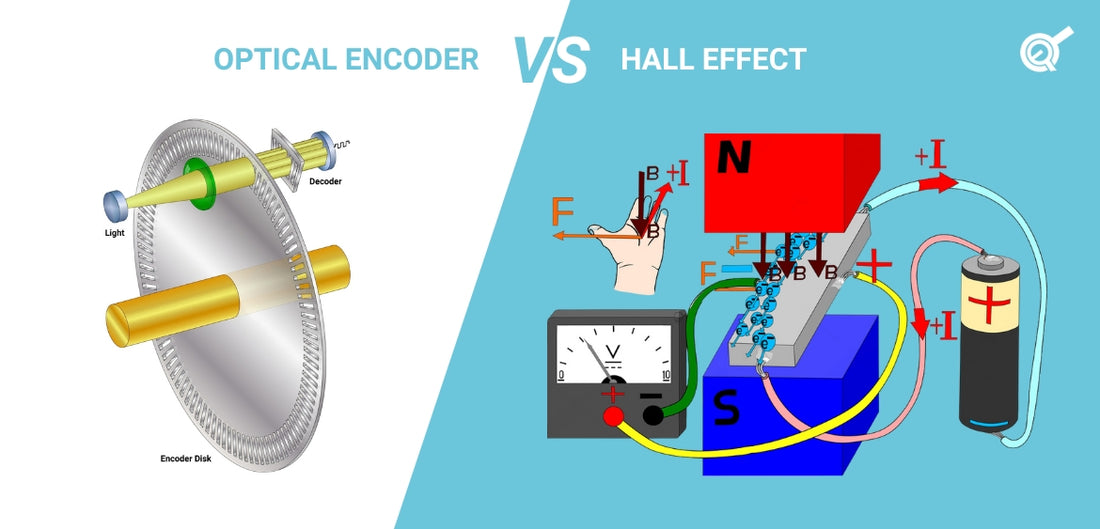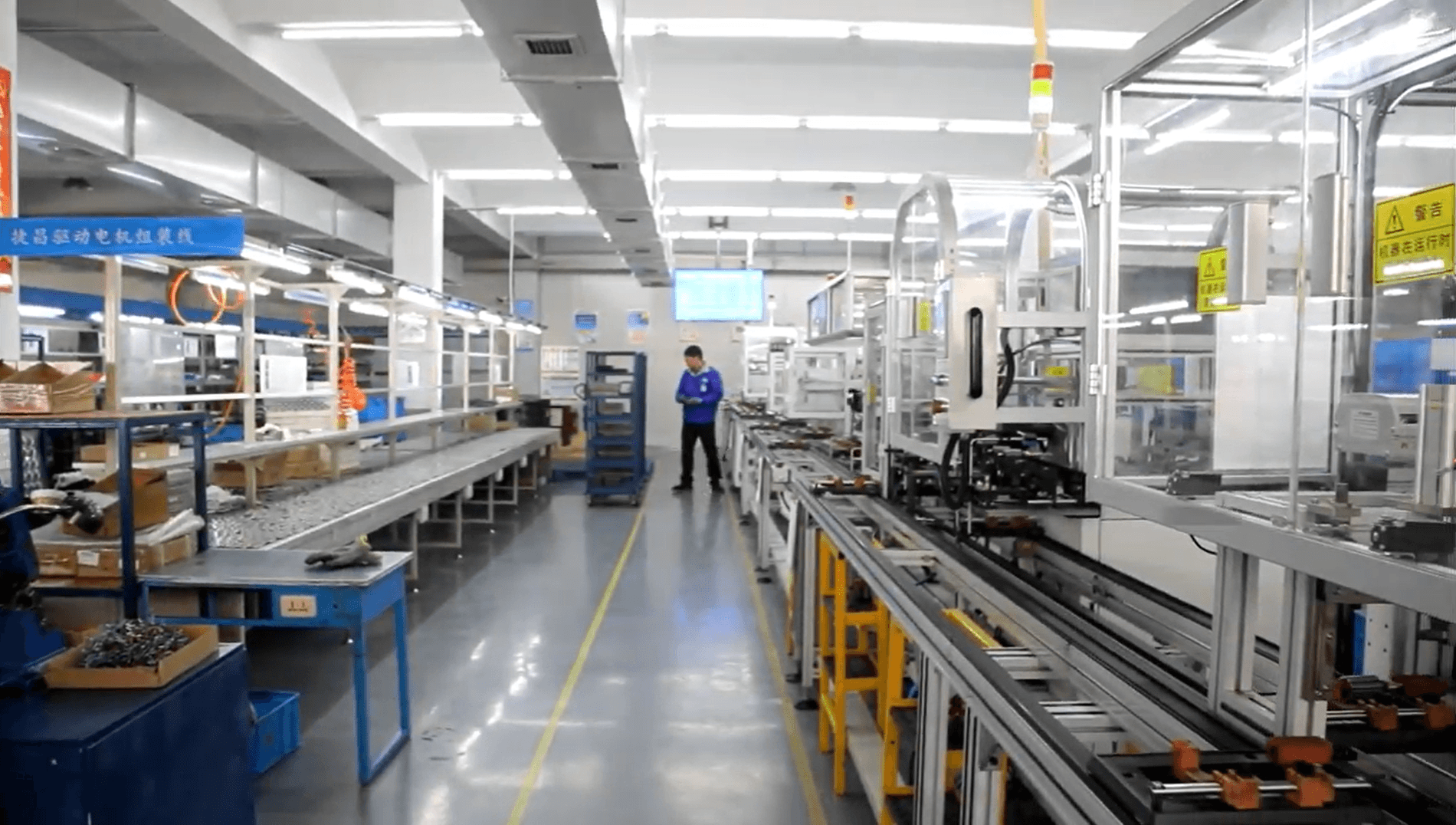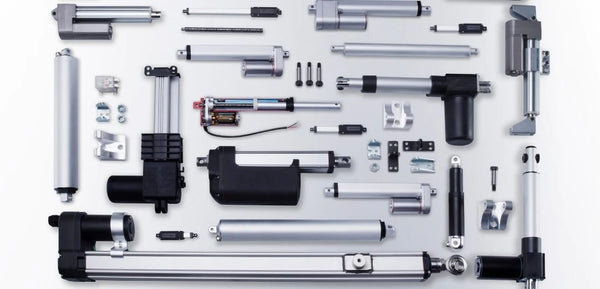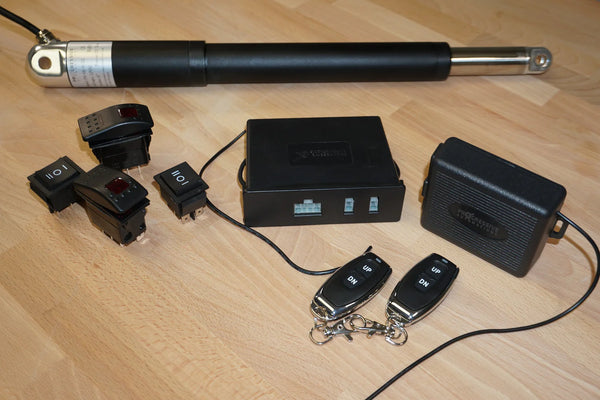When properly implemented, positional feedback can allow multiple actuators to move together synchronously, use preset memory positions, and travel with higher accuracy and precision. Both optical encoders and hall effect sensors are popular for reading the positional feedback of a motor with good accuracy; however, each feedback option offers different benefits that can favor certain applications more than others. This article will compare the important aspects of optical encoders and hall effect sensors such as how they work, their popular applications, and their pros and cons to help you determine which feedback option works best for your needs.
Exploring Optical Encoders: Function and Applications

Optical encoders are a type of feedback device for measuring the position of a motor shaft that uses photo sensors to detect the light beams that pass through the slots of an internal rotating disk. A photo sensor acts as the receiver, generating an electrical pulse each time light passes through the transparent marks of a slot which over time creates a square waveform when counting the string of pulses.

By counting these pulses, a separate external controller can keep track of information such as the motor’s current position, speed, and number of completed revolutions. This provides precise feedback which can then be used for controlling the motion of a motor that is driving a linear actuator. Given their very high levels of accuracy and speed, optical encoders are popular feedback devices in use cases like:
- CT scan systems
- Lab equipment
- Medical devices
- Spectrometers
- Centrifuges

Advantages and Limitations of Optical Encoders
Benefits
- High Resolution: Optical encoders can provide very high resolution, allowing for precise position sensing.
- Accuracy: Optical encoders offer very high accuracy in position sensing, making them suitable for applications that require precise measurements.
- No Contact: Light-based sensing does not require physical contact between the encoder and the sensing element, reducing wear and tear which increases the lifespan of optical encoders.
- High Speed: Optical encoders can operate at high speeds, making them ideal choices for applications that require fast position sensing without compromising accuracy.
Drawbacks
- Susceptible to Environmental Factors: The “line of sight” for light sources of optical encoders can be affected by dust, dirt, and other environmental factors before reaching the internal receiver which can reduce their accuracy and precision.
- Complex Installation: Optical encoders require careful alignment and installation to ensure accurate readings, which can be a time-consuming and challenging process.
- Fragility: Compared to other types of feedback mechanisms, optical encoders are designed with thin glass disks and plastics which are more fragile and prone to damage when subjected to mechanical stress or vibrations.
Delving into Hall Effect Sensors: Principles and Uses

The Hall Effect theory, Edwin Hall (who discovered the Hall Effect), stated that whenever a magnetic field is applied in a direction perpendicular to the flow of electric current in a conductor, a voltage difference is induced. This voltage can be used to detect whether a hall effect sensor is in the proximity of a magnet. By attaching a magnet to the rotating shaft of a motor, hall effect sensors can detect when the shaft is parallel to them. Using a small circuit board, this information can be output as a square wave similar to optical encoders.

It is common for hall effect circuit boards to have 2 sensors, resulting in a quadrature output where two signals will rise and fall as the electric motor rotates with a 90° phase difference between them. By counting these pulses and seeing which comes first, you can tell the direction that the motor is spinning. The frequency of these pulses differs between our range of different custom ordered electric linear actuators, however, our PA-04-HS offers hall effect sensor feedback off the shelf. Good accuracy combined with the robustness found in hall effect sensor devices makes them popular for use cases such as:
- Automotive applications
- Home and office ergonomic desks
- Solar tracking and renewable energy
- Marine applications
- Industrial/ heavy-duty lift system

Strengths and Weaknesses for Hall Effect Sensors
Benefits
- Contactless Sensing: Hall effect sensors also do not require physical contact with its hall sensing element, reducing wear and tear, and increasing the lifespan of the device.
- Robustness: Hall effect sensors are more robust and resistant to environmental factors such as dust, dirt, and vibration, increasing their overall reliability in applications with harsh operating conditions.
- Simple Installation: Hall effect sensors are relatively easy to install and require less alignment compared to optical encoders.
- Lower Cost: Hall effect sensors generally have a more affordable price point compared to optical encoders.
Drawbacks
- Lower Resolution: Hall effect sensors typically have lower resolution compared to optical encoders, which may cause limitations on their suitability for applications that require very high precision.
- Limited Speed: Hall effect sensors have more limitations in terms of the maximum speed at which they can accurately sense position.
- Magnetic Interference: The internal magnets of hall effect sensors can be affected by magnetic interference from the outside, which impacts feedback accuracy and reliability in certain environments.
- Temperature Sensitivity: The magnetic properties of hall effect sensors can be affected due to temperature variations, which may require additional compensation or calibration in applications with large changes in temperature range.
IN SUMMARY
Optical encoders and hall effect sensors are popular choices for reading positional feedback, however, we need to be aware of their differences, especially their benefits and drawbacks. When choosing between optical encoders and hall effect sensors, it is important to find the suitable balance of accuracy, durability, complexity, and price point that works best for you.
As one of the top suppliers of electric linear actuators, Progressive Automations offers industry-leading flexibility, quality, support, and field experience to meet all your needs. If you have any other questions about what we can offer, please do not hesitate to reach out to us! We are experts in what we do and want to ensure you find the best solutions for your application.
sales@progressiveautomations.com | 1-800-676-6123








